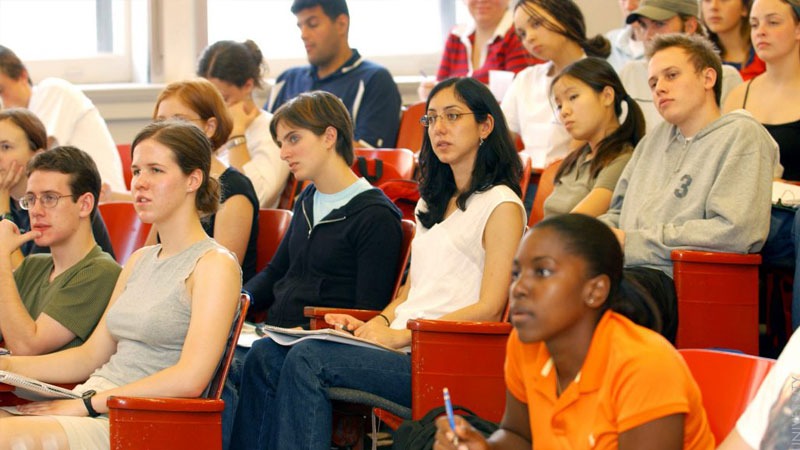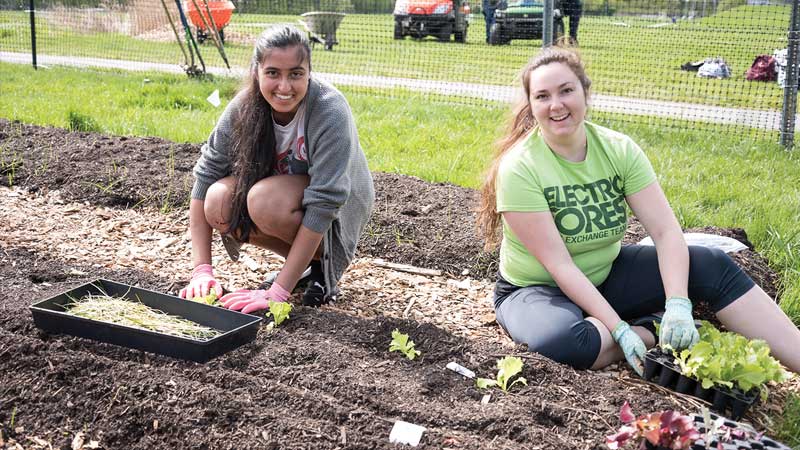Generation H

Although many food-insecure teens will eventually earn their high school diplomas and head off to college, too many of them don’t graduate from hunger. The underlying causes don’t magically disappear after high school; in fact, they can become even more challenging.
High School Hunger
No teen wants to admit they are hungry, especially to their peers. Most simply hide it, while others engage in risky or illegal behavior to combat it. The teenage world is hard enough to navigate already without the added burden of food insecurity.
Thankfully, the Maryland Food Bank’s School Pantry Program offers students access to nutritious foods in the familiar environment of their school. Of the 219 pantries we work with, 47 are in high schools.

At West Baltimore’s Augusta Fells Savage Institute of Visual Arts, school liaison Twanneisha Taylor sees their pantry as much more than a place for food access.
“I use the pantry as a tool to gain relationships with my students and members of the community,” she said. “When they get comfortable with me, they share more, which means I know how to help them with more things. I really appreciate that the pantry makes that happen.”
But for some, even a school pantry can’t counter the deep emotional impact of hunger.
Alphonso Mayo, founder and executive director of Mentoring Mentors, Inc who works with troubled teenagers — many of whom are food insecure — recalls his experiences dealing with hunger as a teen.
“When I was in high school, food assistance was frowned upon and judged harshly by my peers and closest friends. I didn’t want anyone to know my family was in need. I would never ask for or accept assistance – I’d even make jokes about others in need to cover up my insecurities and shame,” he said.
Degrees of Food Insecurity
A change in schools does not equate to a change in food insecurity. Hunger on campus is a direct extension of hunger at home.
In Maryland, MFB works with 12 colleges and universities to run food pantries in an effort to combat the growing issue, including: Salisbury, Frostburg, Towson, the University of Baltimore, Stevenson, as well as Carroll, Arundel, and Howard County Community Colleges. MFB helps stock their pantries with nutritious foods to offer students relief, allowing them to focus on their academic responsibilities.
A recent Temple University study is one of many that are shining a light on just how pervasive college hunger is — nearly half of the 86,000 Temple study respondents reported being food insecure in the prior 30 days.

Between all the expenses associated with higher education, college students are increasingly finding it difficult to eat well on a regular basis. And we know all too well that the discomfort of hunger will affect academic performance for students of all ages. In fact, a recent New York Times article quoted one student describing “poverty naps,” where she decides to go to sleep rather than deal with her hunger pangs.
Howard County Community College, which has 14,000 students, is trying a new approach this year, supplying their pantry with fresh produce from an on-campus community garden.
“Nearly half of our fall semester students received some financial aid support during their time at Howard Community College. Students who struggle with the cost of college often struggle with the cost of food,” said Dr. Kate Hetherington, president of Howard Community College. “Howard Community College established its food pantry and garden to live its mission of providing pathways to success. By addressing food insecurity among students, we are helping students succeed and build a better life for their families.”
The plan is to ensure their pantry has enough produce to meet their students’ needs and donate any surplus to the Maryland Food Bank. “It would be great to be able to give something back to the organization that has supported our pantry,” noted Garden Manager Andrea Barnhart.

“This first season, we’re trying to see what will grow well, see what the need actually is. Next season we can grow produce our diverse student population really want.”
Barnhart regularly talks to students about how gardens are at the intersection of food access and sustainability, a message she hopes they will help spread.
We Need Your Help
Programs, campaigns, and educational outreach at the Maryland Food Bank has always relied on the philanthropic support of charitable individuals like you.
Much like our food distribution efforts, outreach activities at the Maryland Food Bank rely on generous donations of money and time.
We hope you’ll consider a contribution.






